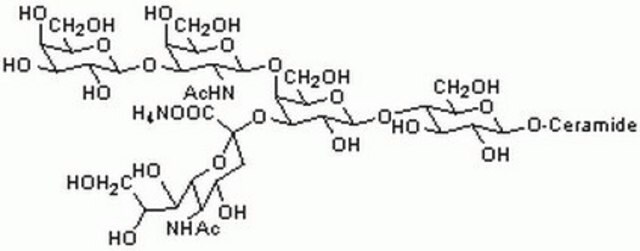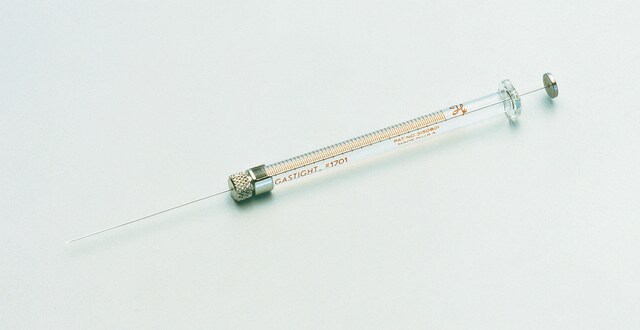ABN1723
Anti-RTN3 (R458)
from rabbit
Synonyme(s) :
Reticulon-3, HAP, Homolog of ASY protein, Neuroendocrine-specific protein-like 2, Neuroendocrine-specific protein-like II, NSP-like protein 2, NSP-like protein II, NSPLII
About This Item
Produits recommandés
Source biologique
rabbit
Niveau de qualité
Forme d'anticorps
unpurified
Type de produit anticorps
primary antibodies
Clone
polyclonal
Espèces réactives
mouse, human
Réactivité de l'espèce (prédite par homologie)
rat (based on 100% sequence homology), chimpanzee (based on 100% sequence homology)
Technique(s)
immunofluorescence: suitable
immunohistochemistry: suitable
immunoprecipitation (IP): suitable
western blot: suitable
Numéro d'accès NCBI
Numéro d'accès UniProt
Conditions d'expédition
dry ice
Modification post-traductionnelle de la cible
unmodified
Informations sur le gène
human ... RTN3(10313)
Description générale
Spécificité
Immunogène
Application
Immunohistochemistry Analysis: A 1:2,000 dilution from a representative lot immunostained dystrophic neurites in Alzheimer′s diseased (AD) human frozen brain tissue sections (Courtesy of Wanxia He, The Cleveland Clinic Foundation, U.S.A.).
Western Blotting Analysis: A 1:2,000 dilution from a representative lot detected RTN3 isoforms in 50 µg of brain tissue lysate from a wild-type, but not RTN3-knockout, mouse (Courtesy of Wanxia He, The Cleveland Clinic Foundation, U.S.A.).
Immunofluorescence Analysis: A representative lot detected RTN3 immunoreactivity partially co-localized with that of BACE1 in mouse brain tissue sections (He, W., et al. (2004). Nat. Med.10(9):959-965).
Immunohistochemistry Analysis: A representative lot detected RTN3 immunoreactivity enriched in grey matter neuronal cell bodies of human brain tissue sections (He, W., et al. (2004). Nat. Med.10(9):959-965).
Immunoprecipitation Analysis: A representative lot co-immunoprecipitated BACE1 with RTN3 from HEK293 and human frontal cortex membrane extracts (He, W., et al. (2004). Nat. Med.10(9):959-965).
Western Blotting Analysis: A representative lot detected RTN3 isoforms expression in multiple mouse tissues, including broadly expressed ~25 kDa RTN3-A1 (UniProt Q9ES97-3), ~100 kDa fat tissue-specific RTN3-AL (UniProt Q9ES97-1), ~95 kDa brain-specific RTN3-B, and ~27 kDa RTN3-A2 (UniProt Q9ES97-4) in spinal cord. RTN3 target bands were not detected in tissue samples from RTN3-knockout mice (Shi, Q., et al. (2014). J. Neurosci. 34(42):13954-13962; He, W., et al. (2004). Nat. Med.10(9):959-965).
Western Blotting Analysis: A representative lot detected RTN3 isoform 3 (UniProt O95197-3) wild-type and mutant constructs expression. Membrane integration was affected by L71K/L72K mutation or deletion of N-terminal 97 a.a., while truncation of the first 61 a.a. did not affect embrane integration. Western blotting analysis of protease K-digested HEK293 microsomal preparation indicated a cytoplasmic orientation of the C-terminal end (He, W., et al. (2007). J. Biol. Chem. 282(40):29144-29151).
Western Blotting Analysis: A representative lot detected RTN3 in BACE1 immunoprecipitate from HEK293 membrane extract. A bimodal distribution showing RTN3 enrichment in subcellular fractions containing Golgi proteins and those containing ER markers was seen (He, W., et al. (2004). Nat. Med.10(9):959-965).
Western Blotting Analysis: A representative lot detected RNAi-mediated RTN3-knockdown in Swedish mutant APP-expressing 125.3 cells (He, W., et al. (2004). Nat. Med.10(9):959-965).
Neuroscience
Qualité
Western Blotting Analysis: A 1:500 dilution of this antibody detected RTN3 isoforms in 50 µg of brain tissue lysate from a wild-type, but not RTN3-knockout, mouse.
Description de la cible
Forme physique
Stockage et stabilité
Handling Recommendations: Upon receipt and prior to removing the cap, centrifuge the vial and gently mix the solution. Aliquot into microcentrifuge tubes and store at -20°C. Avoid repeated freeze/thaw cycles, which may damage IgG and affect product performance.
Autres remarques
Clause de non-responsabilité
Vous ne trouvez pas le bon produit ?
Essayez notre Outil de sélection de produits.
Code de la classe de stockage
12 - Non Combustible Liquids
Classe de danger pour l'eau (WGK)
WGK 1
Point d'éclair (°F)
Not applicable
Point d'éclair (°C)
Not applicable
Certificats d'analyse (COA)
Recherchez un Certificats d'analyse (COA) en saisissant le numéro de lot du produit. Les numéros de lot figurent sur l'étiquette du produit après les mots "Lot" ou "Batch".
Déjà en possession de ce produit ?
Retrouvez la documentation relative aux produits que vous avez récemment achetés dans la Bibliothèque de documents.
Notre équipe de scientifiques dispose d'une expérience dans tous les secteurs de la recherche, notamment en sciences de la vie, science des matériaux, synthèse chimique, chromatographie, analyse et dans de nombreux autres domaines..
Contacter notre Service technique








